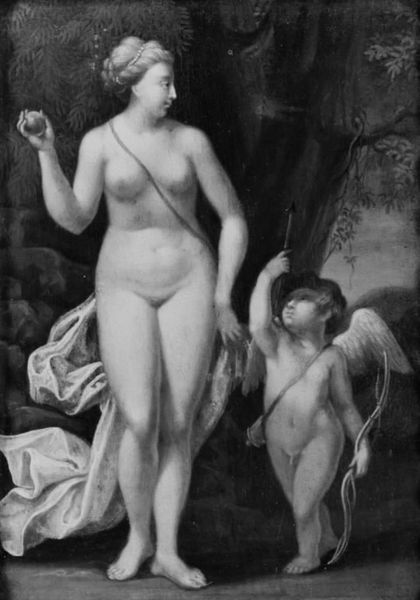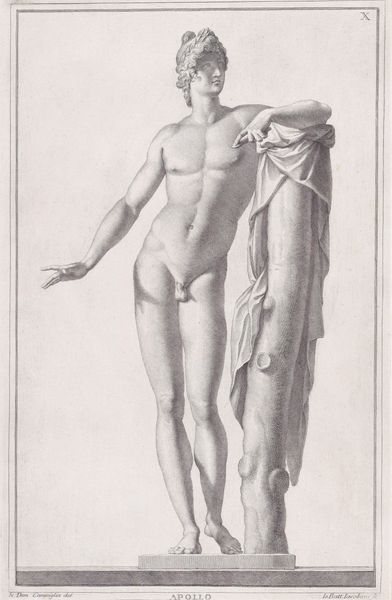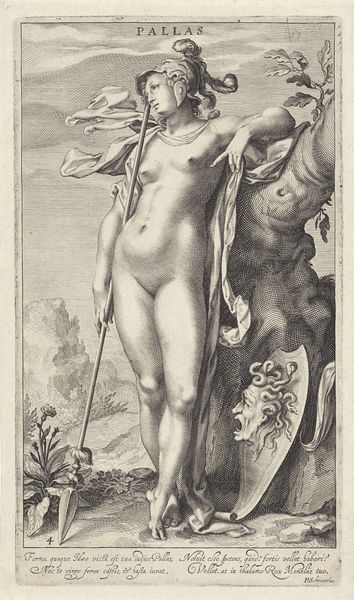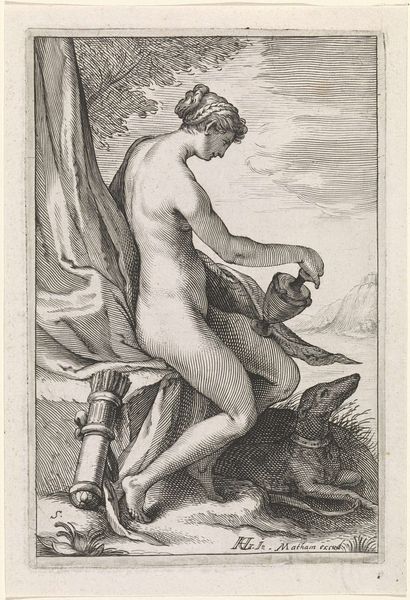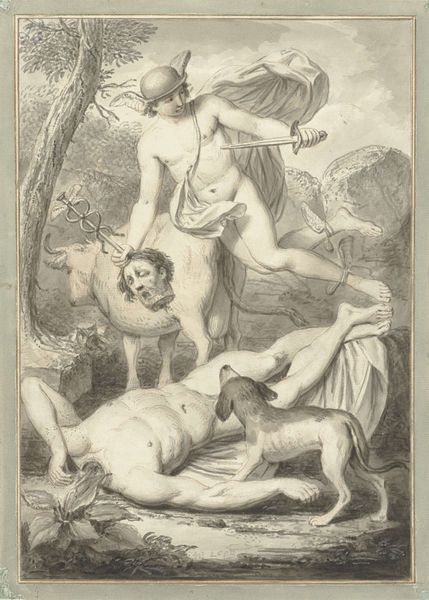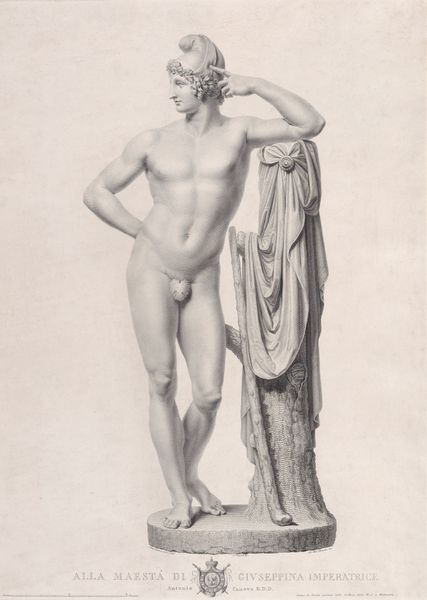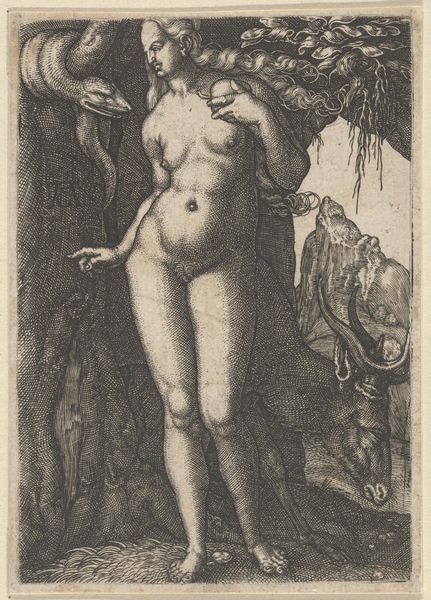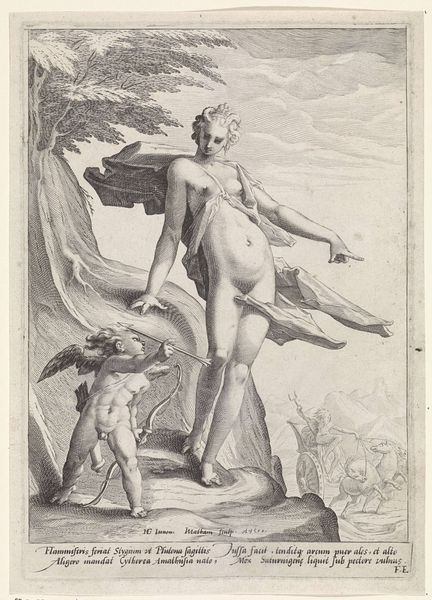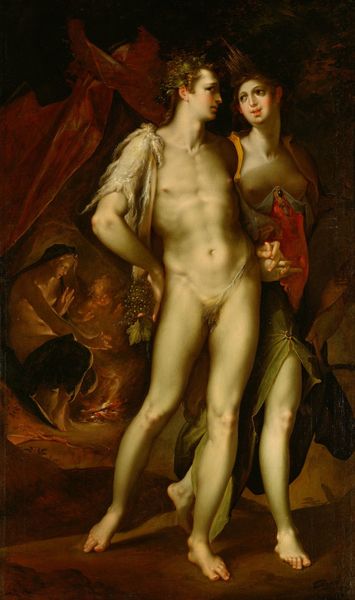
painting
#
allegory
#
painting
#
sculpture
#
figuration
#
11_renaissance
#
black and white
#
history-painting
#
academic-art
#
monochrome
#
nude
#
monochrome
Dimensions: 141.5 cm (height) x 100 cm (width) (Netto)
Curator: I’m drawn to the rather stark monochrome palette—or apparent lack thereof—in this image. It conjures a sense of austerity and seriousness. Editor: Indeed. We’re looking at a painting, currently held at the Statens Museum for Kunst, titled "Minerva as Bellone." Although attributed to an anonymous artist, its estimated creation lies between 1586 and 1600. What stands out to you? Curator: Beyond the immediately visible thematic material—war represented in a nude Minerva with military attributes—the composition’s symmetry and its stark contrasts are visually arresting. The positioning of Minerva and the angles created by the shaft create dynamic tension across the entire scene. It all feels very academic, very self-aware in its artifice. Editor: From my perspective, that austerity seems indicative of the means and modes of artistic labor at play. Consider the use of monochrome, potentially not merely an aesthetic choice, but perhaps also economical, relating to material scarcity and labor constraints. The depiction, the means, the material... it all speaks to a culture bound by its limits. How might these choices around figuration relate to other depictions during the period? Curator: A pertinent query. The contrapposto of Minerva references classical statuary while being uniquely mannered for that epoch. But consider the placement of details, the small battle in the background—the anonymous painter places great weight in those specific arrangements of form. We must interrogate not merely what is shown, but the language with which they are doing so. Editor: I am compelled by what seems like an effort to challenge conventions regarding luxury, in a sense almost repurposing it toward didactic purposes of allegorical historical depiction. One wonders about the artist's intention towards challenging material conventions, while creating and adhering to more academic visual ones. Curator: So, on consideration, the academic and material limitations give the piece a voice, and help transmit to us what we consider Renaissance culture? Editor: Precisely, and perhaps in surprising concord with limitations and intentional constraints in equal measure.
Comments
No comments
Be the first to comment and join the conversation on the ultimate creative platform.
